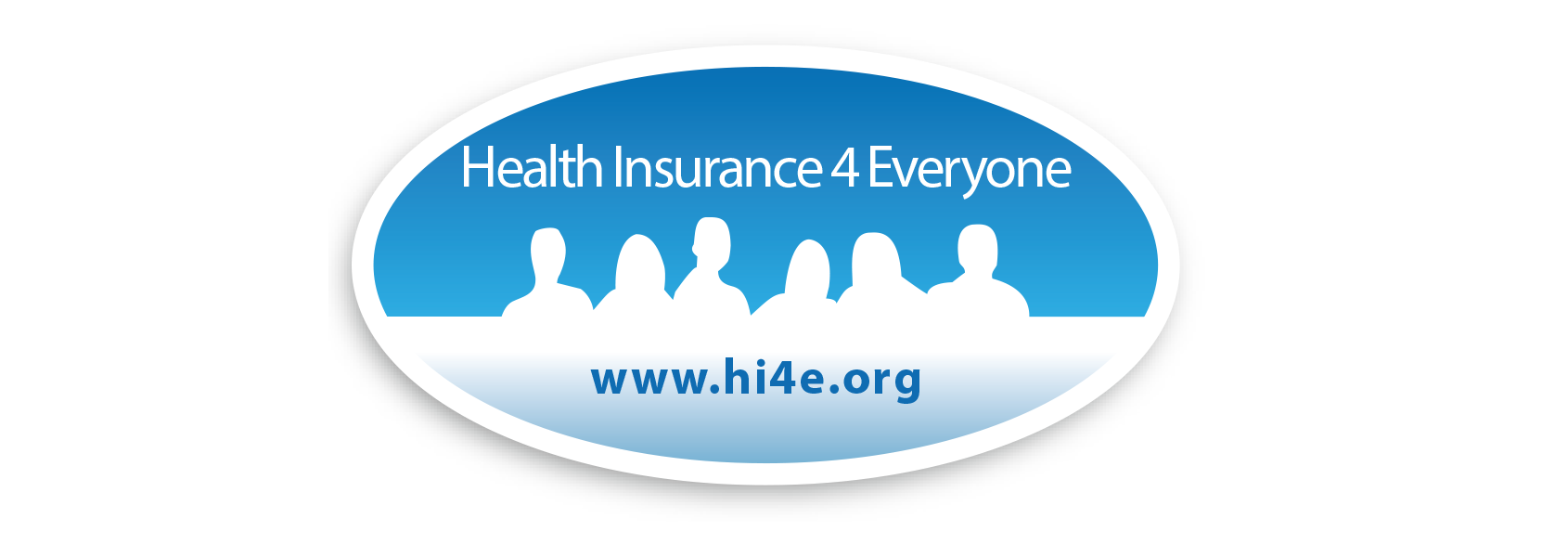
Protests against racism and police violence continued over the weekend. In Aurora, Colorado, police used pepper spray on crowds as thousands took to the streets, shutting down an interstate, in a call for justice for Elijah McClain. McClain, 23, was killed by police after he was tackled by police as he headed home from a local convenience store, placed in a chokehold and then injected with the sedative ketamine by paramedics. Three officers with the Aurora Police Department were fired, and a fourth resigned, after they took selfie photos reenacting the killing of Elijah McClain in front of a memorial for him two months after his death. Aurora’s interim police chief, Vanessa Wilson, called the photo a “crime against humanity and decency.”
Colorado Governor Jared Polis announced a special prosecutor would reopen a probe into the police killing of Elijah McClain. Those officers are Erica Marrero and Kyle Dittrich. The officer in the middle of the photos, Jaron Jones, resigned. Officer Jason Rosenblatt, one of the officers involved in McClain’s arrest, was terminated after responding via text to the photos with “haha.” It’s not clear if Rosenblatt will appeal his termination.
Federal law enforcement agencies revealed that, since last year, they’ve been investigating the death of Elijah McClain at the hands of Aurora police and paramedics. The U.S. Attorney’s Office for the District of Colorado, the Department of Justice’s Civil Rights Division and the Denver Division of the FBI said in a news release that the recent international attention around the death of McClain caused them to disclose their ongoing investigation. McClain was walking home from a store when a passerby called 911 and reported McClain was acting odd.
Three officers responded to the call and located McClain walking northbound near Interstate 225. McClain was wearing a mask but was not armed, and had not committed a crime. McClain didn’t stop when officers told him to, later telling them he had his music playing on his headphones and couldn’t hear them. One officer grabs McClain, who asked the officer to respect his boundaries, placed him in a chokehold and tackled him to the ground. He was also given ketamine, a sedative, by an Aurora Fire Department paramedic.
The officers claim McClain resisted arrest and that he attempted to take one of their guns. Body camera footage does not show McClain reaching for their guns. McClain “briefly went unconscious,” according to a report the local district attorney, Dave Young, completed last fall. McClain could also be heard in the police video telling the officers, “I can’t breathe, please,” and he vomited while he was on the ground. When paramedics arrived, McClain was injected with ketamine, placed into soft cuffs and loaded into an ambulance. About seven minutes after he received the ketamine, McClain had no pulse in the ambulance and went into cardiac arrest, the report said. Medics were able to revive him, but he was later declared brain dead, and he was taken off life support less than a week later.
Mari Newman, an attorney for McClain’s family, said that the ketamine was unnecessary and that she wants a thorough investigation. “The Aurora medics had no right to inject Elijah with ketamine at all,” she said. “He was handcuffed, crushed against the ground by officers much larger then he was, and he was not fighting. He was begging for his life, vomiting and trying to breathe. And they certainly had no right to involuntary inject him with a dose intended for someone over twice his size.”
Read more

The World Health Organization is warning “the worst is yet to come” as countries across the globe are experiencing new spikes, with some putting the brakes on reopening. The pandemic is the worst in the Americas, where the number of COVID-19 deaths are projected to nearly triple to 627,000 by October 1. Coronavirus cases have now surpassed 11 million worldwide, with over a half-million deaths. Cases continue to surge across much of the United States, where confirmed cases have now topped 2.8 million, with over 128,000 reported deaths — that’s one-quarter of the world’s cases and deaths, though the U.S. has just over 4% of the global population.
Spikes are being reported in 36 states. Only two states — Connecticut and Rhode Island — saw a decline in new cases compared to the previous week. The United States has set another grim coronavirus record, confirming nearly 52,000 cases of COVID-19 in just 24 hours. Alaska, Arizona, California, Georgia, Idaho, Oklahoma, South Carolina, Tennessee and Texas all reported single-day record levels of the disease with hospitals in some regions already overwhelmed with patients.
At least a dozen states have “paused” their reopening. In California, Governor Gavin Newsom ordered bars in seven counties, including Los Angeles, to close. The governors of Florida and Texas have ordered bars to close, among other restrictions, in an attempt to curb the surge in cases. A major hospital system in Houston reportedly stopped disclosing COVID-19 data after its ICU capacity hit 100%, and following conversations with Governor Greg Abbott in which he expressed concern over negative headlines. Both governors are refusing to impose statewide stay-at-home orders and mandate the wearing of face masks.
More states around the country are imposing new measures and rolling back their reopening as coronavirus cases continue to surge. The governors of Oregon and Kansas are mandating face masks for residents. Jacksonville, Florida, also said it will make face coverings mandatory. Seven cities in Texas say they will impose orders mandating face masks. Meanwhile, hospitals in Texas report a dire situation as cases surge.
Meanwhile, beaches in Los Angeles, as well as several Florida counties, were closed for Fourth of July weekend. Despite skyrocketing cases, crowds still packed many of the open beaches in coastal cities for the Fourth of July holiday weekend, sparking further fears of new spikes.
Officials in Texas, Florida and Arizona say the states’ early reopenings helped fuel the explosion in cases. In California, Governor Gavin Newsom reimposed coronavirus restrictions, shutting down bars and indoor dining in 19 counties that are home to more than 70% of California’s population. In Arizona, Governor Doug Ducey ordered bars, gyms, movie theaters and water parks closed for at least 30 days amid an exponential rise in new infections. New York City has also halted plans to reopen indoor dining at restaurants. New York, New Jersey and Connecticut have ordered travelers from 16 states with high infection rates to self-quarantine upon their arrival.
Read more
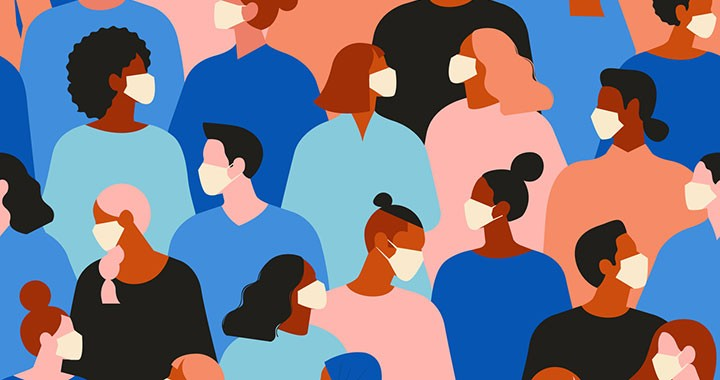
With more than 2.06 million cases, America has the world’s largest COVID-19 confirmed cases to date. It’s also first when it comes to the total number of deaths, with more than 117,000 people having died of COVID-19 complications. Nearly 7.5 million people have had confirmed infections worldwide and over 420,000 people died. As US states are opening up their economies, Harvard Global Health Institute director Dr. Ashish Jha predicts that the US will cross 200,000 deaths sometime in September. Jha explained his estimates only take into account the next few months, but COVID-19 will obviously not disappear after that.
“The pandemic won’t be over in September so I’m really worried about where we’re going to be in the weeks and months ahead. We’re really the only major country in the world that opened back up without really getting our cases as down low as we really needed to,” Jha noted, adding that the US is the only advanced country in the world not to have a proper contact tracing system setup. People should continue to maintain social distancing and wear masks, Jha advised. They should also “put pressure” on the government to advance testing and contact tracing programs.
“But even if we assume that it’s going to be flat all summer, that nothing is going to get worse, we’re going to stay flat all summer — even if we pick that low number, 800 a day — that’s 25,000 a month,” Jha pointed out. “In three and a half months, we’re going to add another 87- 88,000 people, and we will hit 200,000 sometime in September.” Jha said anyone who still thinks the summer will bring a dramatic decrease in cases is “engaging in wishful thinking.” Coronavirus cases and associated hospitalizations may be falling in Massachusetts, New York, New Jersey, and Connecticut, he said, but cases are surging in Arizona, Texas, Florida, and the Carolinas. The Harvard professor of public health said he is not trying to scare people into staying home by raising concerns about the number of deaths he’s predicting.
In Brazil, the coronavirus death toll has topped 43,000 with the total number of confirmed cases at over 850,000. It now has the second-highest number of COVID-19 deaths and cases in the world behind the United States. According to the health ministry, the COVID-19 mortality rate in Brazil is five% and nearly 388,500 people have recovered from COVID-19 in Brazil.
China reported its highest number of daily infections in months, raising concern over a second wave of the outbreak. In Beijing, authorities have reimposed lockdown measures after a new cluster of cases emerged last week. The cluster, the capital’s first locally transmitted cases in nearly two months, raised mainland China’s total number to 83,132. Almost 4,700 people have died in China, where the pandemic originated in December.
The World Health Organization says the pandemic is accelerating in Africa, with the most affected countries being South Africa, Algeria, Nigeria, Egypt and Sudan. In Yemen, medical authorities warn deaths linked to the pandemic could exceed war-related fatalities in the port city of Aden. The best way to prevent illness is to avoid being exposed to this virus. Learn how COVID-19 spreads and practice these actions to help prevent the spread of this illness.
Covid 19 isn’t going anywhere anytime soon so the recommendations to help prevent the spread of COVID-19 as the world’s economy reopens are: Keep 6 feet of social distance between yourself and others; wear a mask or cloth covering when around others-especially when in situations where you can’t maintain the 6 feet of social distancing; clean your hands often, either with soap and water for 20 seconds or a hand sanitizer that contains at least 60% alcohol; avoid close contact with people who are sick; disinfect frequently touched surfaces regularly and stay home if you are feeling any symptoms.
Read more

There are almost 8,000,000 confirmed cases of the coronavirus worldwide, with over 420,000 deaths. As many countries open up again, the World Health Organization warned the situation is getting worse globally. Nearly 75% of recent cases came from 10 countries, mostly in the Americas and South Asia, said the WHO. The WHO also said that the spread of COVID-19 by asymptomatic people appears to be rare.
Latin America remains the epicenter of the pandemic now with the highest tolls reported in Brazil, Mexico, Chile and Peru — which together account for over 1 million confirmed cases. The WHO said Central and South America have likely not reached peak transmission yet. Cuba remains announced they are closing in on the tail end of the pandemic, where infections have been on the decline for two months.
The number of confirmed coronavirus cases continues to rise in U.S. states that were among the first and most aggressive to reopen, leading some local officials to reconsider reopening plans. In Oregon, Gov. Kate Brown announced a 7-day statewide pause on further reopening as health officials study the data and try to contain budding outbreaks. In Arizona, Gov. Doug Ducey tried to reassure people that the rise in confirmed cases was expected and that the state’s hospitals have the capacity to handle a further surge.
Recent data shows 21 states have seen an increase in their average daily new Covid 19 cases this week than in the previous week. Alabama, Oregon and South Carolina are among the states with the biggest increases. Alabama saw a 92 percent change in its seven-day average, while Oregon’s seven-day average was up 83.8 percent and South Carolina’s was up 60.3 percent. Hospitalizations have risen as well. For example, Arkansas has seen a 120.7 percent increase in hospitalizations, from 92 cases to 203, since Memorial Day.
Health officials warn that mass gatherings of any type could worsen the spread of the virus, as the 2020 election heats up and nationwide protests against racism and police brutality stretch into their third week across the globe. CDC continues to study the spread and effects of the novel coronavirus across the United States. We now know from recent studies that a significant portion of individuals with coronavirus lack symptoms (“asymptomatic”) and that even those who eventually develop symptoms (“pre-symptomatic”) can transmit the virus to others before showing symptoms. This means that the virus can spread between people interacting in close proximity—for example, speaking, coughing, or sneezing—even if those people are not exhibiting symptoms.
In light of this new evidence, CDC recommends wearing cloth face coverings in public settings where other social distancing measures are difficult to maintain (e.g., grocery stores and pharmacies) especially in areas of significant community-based transmission. It is critical to emphasize that maintaining 6-feet social distancing remains important to slowing the spread of the virus. CDC is additionally advising the use of simple cloth face coverings to slow the spread of the virus and help people who may have the virus and do not know it from transmitting it to others. Cloth face coverings fashioned from household items or made at home from common materials at low cost can be used as an additional, voluntary public health measure.
Read more
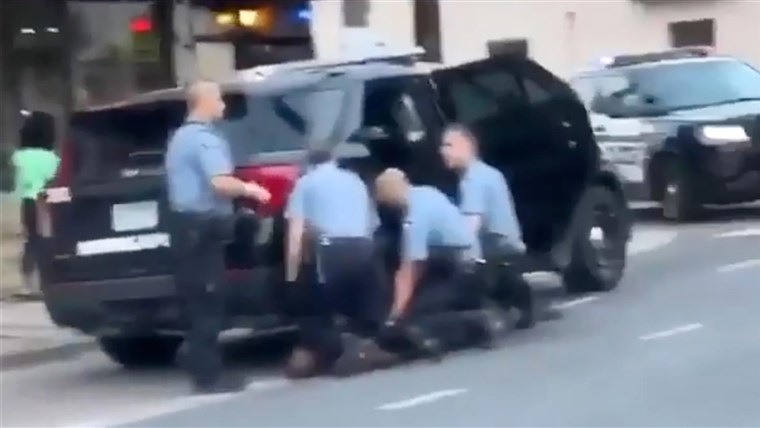
Protests erupted in Minneapolis, Minnesota after video footage of the death of George Floyd, 46, went viral. Floyd died after being arrested by police outside a shop on May 25th on a report he used a fake $20 bill to buy a pack of cigarettes from Cup Foods, a grocery store. The video shows now fired police officer, Derek Chauvin, kneeling on Mr Floyd’s neck while he was laying on his stomach in the street with his hands cuffed behind his back. Floyd can be heard repeatedly saying “Please, I can’t breathe, please, please officer don’t kill me” for the 8 minutes and 46 seconds that Officer Chauvin held him pinned to the ground with his knee on the back of Floyd’s neck.
In the video of the incident, a bystander tells the police: “You got him down. Let him breathe.” After Floyd says, “I’m about to die,” Chauvin tells Floyd to relax. The police ask Floyd: “What do you want?” Floyd repeats: “I can’t breathe.” Floyd continues: “Please, the knee in my neck, I can’t breathe.” The policemen taunt Floyd to “get up and get in the car,” to which Floyd replies: “I will… I can’t move.” Floyd also cries out: “Mama!” He then says “My stomach hurts, my neck hurts, everything hurts,” and requests water. The police do not audibly respond to Floyd. Floyd begs: “Don’t kill me.” A bystander points out that Floyd is bleeding from the nose. Another bystander tells the police that Floyd is “not even resisting arrest right now.”
The day after Mr. Floyd’s death, the Police Department fired all four of the officers involved and the Hennepin County attorney, Mike Freeman, announced murder and manslaughter charges against Derek Chauvin, the officer who can be seen most clearly in witness videos pinning Mr. Floyd to the ground. Chauvin kept his knee on Floyd’s neck for eight minutes and 46 seconds, according to the criminal complaint against him. Video show that Chauvin did not remove his knee even after Mr. Floyd lost consciousness and for a full minute after paramedics arrived at the scene. Floyd’s last words have been compared to those of Eric Garner who uttered the words “I can’t breathe” eight times before he died while being placed in a chokehold by Officer Daniel Pantaleo in July 2014.
Derek Chauvin had 18 complaints over his 19 year career as a police officer with 2 resulting in disciplinary actions. Chauvin has been the subject of several internal complaints as well. George Floyd and fired police officer Derek Chauvin knew each other before the fatal encounter. Chauvin worked outside security at a bar for 17 years while Floyd worked security inside the bar. Floyd grew up in Houston Texas and 13 years ago in 2007 he was charged with armed robbery in a home invasion in Houston In 2009 he was sentenced to five years in prison as part of a plea deal, according to court documents. In 2014 he moved to Minneapolis looking for work and a new start. Videos he posted on social media while under stay at home orders show him denouncing violence and encouraging his community to find another way.
While the protests started in Minnesota, they quickly spread across the globe. Demonstrators gathered in London, France, Germany, Denmark, Italy, Syria, Brazil, Ireland, Poland, Mexico, Canada and New Zealand, among other places, to protest against police brutality in solidarity with the US crowds. Demonstrators have gathered in the thousands in many major cities worldwide. Many protestors remain peaceful but their message has been marred by the violence, looting and vandalism taking place in cities across the US.
Read more
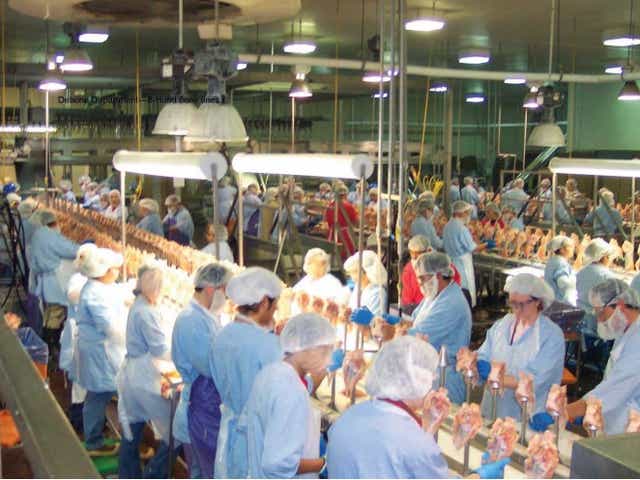
The United Food and Commercial Workers Union, the country’s largest meatpacking workers’ union, is condemning the reopening of 14 meatpacking plants under a recent executive order by the US Administration. The union is calling for CDC coronavirus safety guidelines to be made mandatory, as at least 30 meatpacking workers have died of COVID-19 and over 10,000 have been exposed to or infected by the coronavirus. The industry work practices under normal circumstances tend to put workers in close proximity to each other, working at high speed as they cut up animal carcasses.
The pandemic caused at least 30 meatpacking plants to temporarily close over the past two months, resulting in a 40% drop in pork production capacity and a 25% drop in beef production capacity, the union said. The U.S. Agriculture Department said 14 plants that had closed due to outbreaks of the virus were in the process of reopening this week. The 14 plants included a Smithfield Foods Inc pork facility in Sioux Falls, South Dakota, that started operating on May 7 and another in Waterloo, Iowa, that Tyson Foods said earlier in the week would resume limited operations. The agriculture department also said meat facilities operated by JBS USA [JBS.UL] in Minnesota and Wisconsin, and six other Tyson plants were reopening.
UFCW has previously said more protective equipment and testing would be required to open the plants. But as plants reopened without these measures in place, UFCW International President Marc Perrone criticized the decision. “Today’s rush by the Trump Administration to re-open 14 meatpacking plants without the urgent safety improvements needed is a reckless move that will put American lives at risk and further endanger the long-term security of our nation’s food supply. Since the executive order was announced, the Administration has failed to take the urgent action needed to enact clear and enforceable safety standards at these meatpacking plants.”
Health guidelines issued by CDC and OSHA to help reduce the spread of Covid-19 in slaughterhouses includes face coverings, health training in multiple languages, and more distancing between workers. Processing lines in meat plants typically run at high speeds, with employees eviscerating animals inches apart from each other. Slowing lines down and spreading workers out will undoubtedly increase the cost of producing meat, but Perry says it’s a small price to pay to protect their lives. CDC is also asking meat plants to do away with the contentious practice of offering “attendance bonuses,” in which companies offer hundreds of dollars of incentives to workers on the condition that they don’t miss their shifts.
The common criticism of OSHA and CDC’s Covid-19 guidance to meatpackers is that it’s entirely optional. This has resulted in an inconsistent patchwork of protections by plant and by state which leaves workers at risk for other outbreak. Unions are asking for standardized workplace protections against airborne diseases like Covid-19. Such requirements wouldn’t be without precedent. In 2010, following the H1N1 pandemic, OSHA began to draft mandatory guidelines to reduce the spread of viruses that spread through air and respiratory droplets. That rulemaking was finalized in 2017 but was halted during the change in US Administration.
Read more
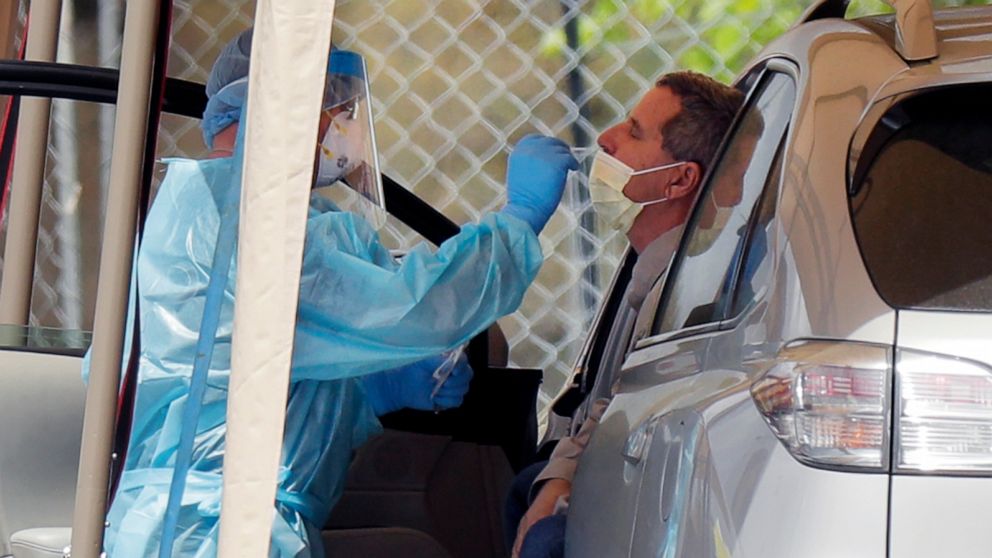
As many states slowly reopen, a pair of studies predict the COVID-19 outbreak is set to become far deadlier in the United States. A draft Federal Emergency Management Agency report forecasts that daily coronavirus deaths in the United States would rise to 3,000 people a day by June 1 — that’s a 70% increase over the current figure. Separately, the Institute for Health Metrics and Evaluation at the University of Washington estimates the U.S. death toll will reach around 135,000 by August in the United States.
The U.S. death toll from the coronavirus outbreak has topped 75,000 and is projected to keep rising in the coming weeks. The official coronavirus death toll worldwide has topped a quarter of a million, with over 3.6 million confirmed cases. The United States makes up close to one-third of confirmed cases and a quarter of known deaths, even though it represents less than 5% of the world’s population.
Over half of U.S. states have relaxed, or are preparing to loosen, social distancing and other restrictions but it has not been a smooth transition. In Georgia, more than 120 Atlanta restaurants have refused to open, saying it is not safe to do so despite Georgia Governor Brian Kemp’s lifting of the state’s shelter-in-place order. In Miami Beach, the governor had to close a popular park — just five days after reopening it — after thousands failed to adhere to new rules requiring social distancing and wearing a face mask.
Meanwhile, we continue to learn more about the virus globally as scientists and doctors try to create a vaccine. A French hospital says they treated a COVID-19 patient as early as December — a month before the government confirmed its first cases. A preliminary new study finds the novel coronavirus that first emerged in China mutated in Europe in February to become more contagious, speeding its spread around the globe. The authors of the study said they released their findings early so that people working on vaccines could see their results.
US Researchers say the novel coronavirus silently spread in the United States earlier than previously thought as well, infecting tens of thousands of people in New York and other major cities before the first US case was confirmed on January 21. A new model by the Network Science Institute at Northeastern University in Boston shows the first infections came from China in early or mid-January, and that the virus went undetected because many people were not presenting symptoms or were misdiagnosed because US doctors had not seen the virus first hand yet.
The model suggests that while Americans were still focused on China, about 28,000 people in major cities — such as New York, San Francisco and Seattle — were infected by March 1. Santa Clara County officials announced that tissue samples confirmed two people who died in early February tested positive for coronavirus. That month, a number of physicians saw patients, without travel histories, who had flu-like symptoms.
Several states, including California and Indiana, have been retracing their coronavirus timelines after discovering that the highly infectious disease started killing people earlier than previously known. These discoveries have emphasized just how much about this pandemic remains unknown. Four months since the novel coronavirus was first discovered in Wuhan, China, experts worldwide still do not fully understand how the virus started, how it impacts the body or what treatments are effective.
Read more
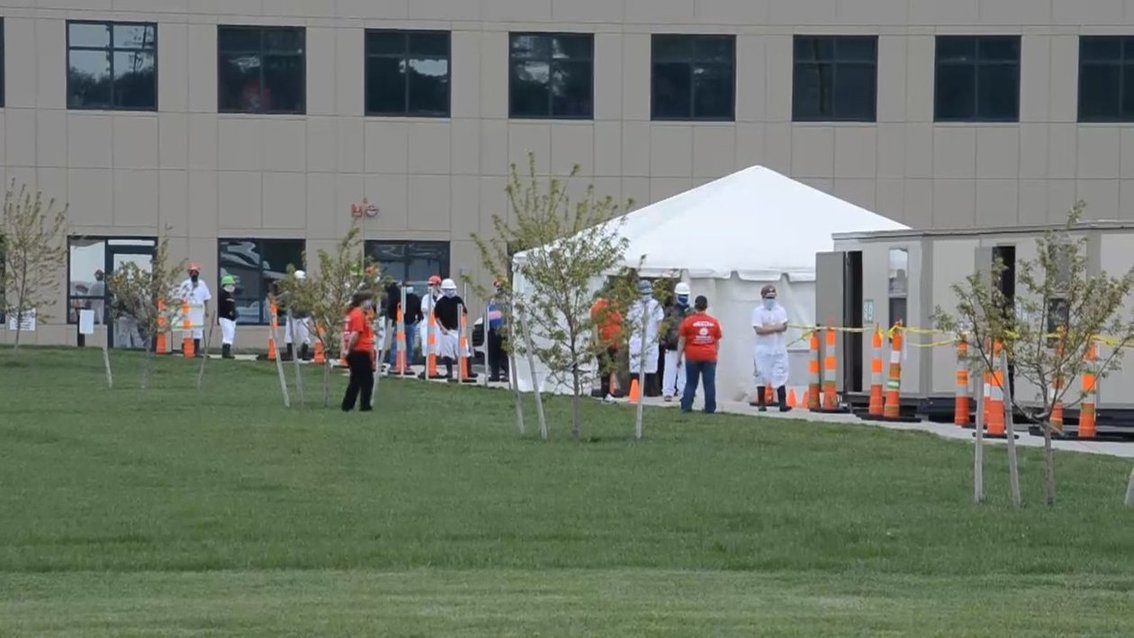
In St. Joseph Missouri, 422 workers at a Triumph Foods pork plant have tested positive for the coronavirus and all of them were asymptomatic, according to state health officials. After nearly three dozen workers at the plant became infected last month, the Missouri Department of Health and Senior Services tested all asymptomatic workers at the plant from April 27 to May 1. The testing found that 422 of 2,367 workers tested positive despite showing no symptoms.
Those workers have been advised to self-isolate for 10 days before returning to work, according to federal health guidelines. The plant remains open, along with a mobile testing site operated by Northwest Health Services. The company just confirmed that one employee, a man in his 40s with underlying health issues has died of Covid 19. The company said he was one of the first workers to be tested and had not returned to work since April 21.
“While individuals tested during this initiative did not show COVID-19 symptoms, lab results received thus far indicate that around 17% tested positive for the virus. Of all the positive test results received thus far, over 90% have been collected from asymptomatic people,” explained Mark Campbell, CEO of Triumph Foods. Employees with positive results were notified and asked to self-isolate. The state health department began tracing measures and have confirmed that nearly 200 people were infected with Covid 19 by some of the asymptomatic Triumph workers. Meanwhile, the state continues to work to contact trace the affected employees and now those they have infected as well.
Missouri Governor Parsons issued a state wide stay at home order on April 6th yet the asymptomatic employees still infected almost 200 people in the counties they live in. Kansas City and Wyandotte County, where the new cases were confirmed, have been under stay at home orders issued by Mayor Lucas since March 24. Despite those orders being issued first and ending later than the state wide order, they still had a spike in cases due to the outbreak at Triumph Foods.
Outbreaks have become common at other meat plants across the U.S., infecting thousands of workers, leading to the closure of some plants and prompting meat shortages. Several big grocery chains this week were restricting customer purchases of meat, and Wendy’s was unable to serve hamburgers at some locations due to shortages. Other packing plants are beginning to test all employees like Triumph Foods, which industry leaders say is critical to assure employees that it’s safe to go back to work and to grow data sets to show how the virus works.
For most people, the coronavirus causes mild or moderate symptoms that clear up after two to three weeks. For some, especially older adults and people with existing health problems, it can cause more severe illness, including pneumonia. Because the virus is still circulating through the community, it’s important to maintain social distancing, mask wearing and hand-washing, even after stay-at-home orders are lifted.
Dr. Aamina Akhtar, Mercy Hospital South chief medical officer and an infectious disease specialist said “The next two to three weeks will be telling, and will really give us an idea whether human actions will lead to an increased number of cases. Our actions today will affect the community around us. It’s a big social responsibility and I hope we are ready.”
Read more
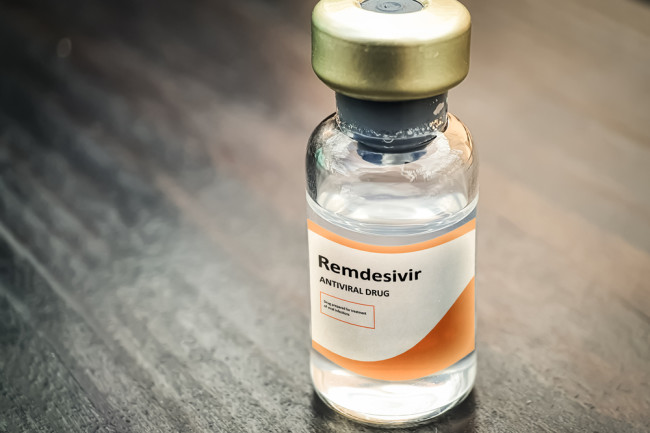
The Food and Drug Administration (FDA) announced the emergency use authorization for the antiviral drug remdesivir, after preliminary results from a federal trial showed the drug could speed recovery in patients infected with the coronavirus. The finding, which has not yet been peer reviewed, came after another study found no benefit for the drug in severely ill patients in China. The new results suggest a moderate improvement in the death rate of patients taking remdesivir, whose hospital stays were shortened, on average, from 15 days to 11.
The issuance of an EUA is different than FDA approval. In determining whether to issue an EUA, the FDA evaluates the available evidence and carefully balances any known or potential risks of any unproven products with any known or potential benefits of making them available during the emergency. Based on evaluation of the emergency use authorization criteria and the scientific evidence available, it was determined that it is reasonable to believe that remdesivir may be effective in treating COVID-19, and that, given there are no adequate, approved, or available alternative treatments, the known and potential benefits to treat this serious or life-threatening virus currently outweigh the known and potential risks of the drug’s use.
The emergency use authorization (EUA) allows for remdesivir to be distributed in the U.S. and administered intravenously by health care providers, as appropriate, to treat suspected or laboratory-confirmed COVID-19 in adults and children hospitalized with severe disease. Severe disease is defined as patients with low blood oxygen levels or needing oxygen therapy or more intensive breathing support such as a mechanical ventilator.
The EUA requires that fact sheets that provide important information about using remdesivir in treating COVID-19 be made available to health care providers and patients, including dosing instructions, potential side effects and drug interactions. The EUA is temporary and will be effective until the declaration that circumstances exist justifying the authorization of the emergency use of drugs and biologics for prevention and treatment of COVID-19 is terminated. It may be revised or revoked if it is determined the EUA no longer meets the statutory criteria for issuance.
Possible side effects of remdesivir include increased levels of liver enzymes, which may be a sign of inflammation or damage to cells in the liver; and infusion-related reactions, which may include low blood pressure, nausea, vomiting, sweating, and shivering.
The top coronavirus task force scientist Dr. Anthony Fauci welcomed news of the first potential treatment for COVID-19. The U.S. government will coordinate the donation and distribution of remdesivir to hospitals in cities most heavily impacted by COVID-19. Given the severity of illness of patients appropriate for remdesivir treatment and the limited availability of drug supply, hospitals with intensive care units and other hospitals that the government deems most in need will receive priority in the distribution of remdesivir.
Read more
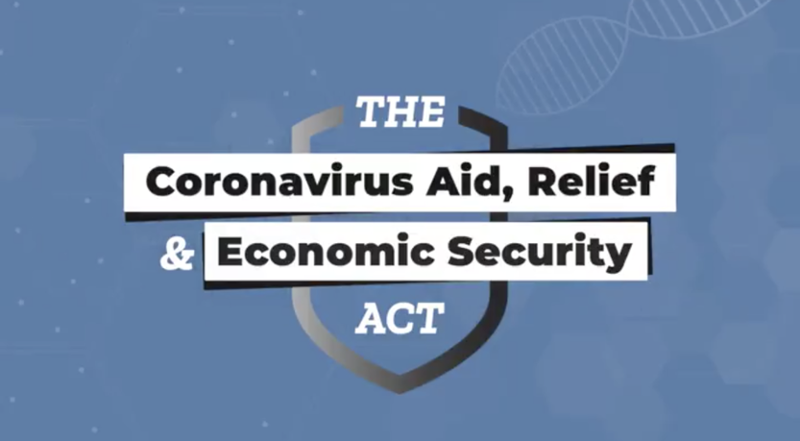
The US Senate overwhelmingly approved $484 billion in new coronavirus aid with most of the money replenishing the Paycheck Protection Program, set up to provide forgivable loans to small businesses. The bill adds another $310 billion to the Paycheck Protection Program, another $75 billion for hospitals, $25 billion for testing and $60 billion for emergency disaster loans and grants.
The bill provides no new stimulus checks for U.S. households, no additional money for food stamps, no limits on fossil fuel bailouts, no funds for election security, no bailout for the U.S. Postal Service and no additional funds for hard-hit state and local governments. Lawmakers were criticized for refusing to take up new assistance to hard-hit U.S. residents — like cash payments and food aid — in the latest relief bill. They were also criticized for not regulating the disbursement of the initial funds which allowed big businesses like corporate chain restaurants getting tens of millions of dollars in loans meant for small businesses.
They contend lawmakers are failing to provide for millions of unemployed people who are unable to pay rent and increasingly at risk of going hungry. Progressive lawmakers are demanding $2,000 monthly payments to all U.S. households and open enrollment in Medicare for uninsured and unemployed people, when lawmakers take up another round of funding, the so-called phase four coronavirus bill.
Senators are in talks for a phase four bill with priorities for that legislation including federal assistance for people having trouble paying rent, according to a Democratic source. Schumer also cited the need for funds for election reform, hazard pay for essential workers, including doctors, nurses and grocery store clerks, and funding for the U.S. Postal Service. Many are skeptical since the virus bailouts have already cost over $2 trillion, pushing our annual deficit this year to close to $4 trillion.
The pandemic continues to batter the U.S. economy as the Labor Department reported another 4.4 million U.S. workers filed for unemployment benefits over the last week, raising new jobless claims over the past five weeks to more than 26 million — a scale that hasn’t been seen since the Great Depression. As of March 13, there were already 7.1 million unemployed Americans, according to the U.S. Bureau of Labor Statistics. When the figures are combined, it would equal more than 33 million unemployed, or a unemployment rate of 20.6%—which would be the highest level since 1934.
Read more












